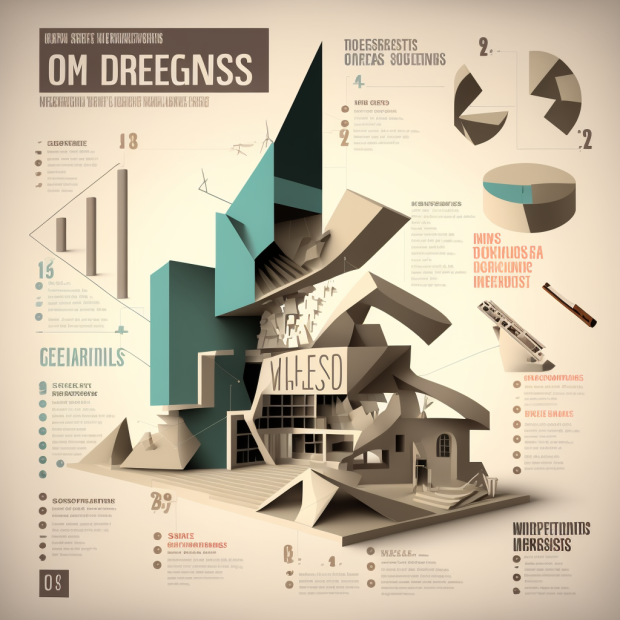How to solve Architectural Design problems using Architectural Animations and Photoreal Renderings?
Solving architectural problems requires a systematic approach that involves identifying the problem, gathering information, analyzing the information, developing solutions, evaluating the solutions, implementing the chosen solution, and monitoring and evaluating its effectiveness over time.
Architectural design is a critical component of the construction process. It involves creating a plan that considers both the aesthetic and functional aspects of a building. Whether you are building a residential home or a commercial space, good architectural design is essential for creating a space that is both visually appealing and functional.
At its core, architectural design is about problem-solving. It involves understanding the needs of the client and developing a plan that meets those needs. This can include considerations such as the building’s purpose, the site’s location, and the environmental conditions. A skilled architect will also take into account issues like accessibility, sustainability, and safety.

When designing a building, an architect must consider both the interior and exterior spaces. The interior design is focused on creating functional spaces that are easy to navigate and provide a comfortable living or working environment. The exterior design is about creating a visually appealing structure that fits into its surroundings and enhances the surrounding landscape.
In addition to aesthetics and functionality, architectural design also plays a critical role in sustainability. A well-designed building can reduce energy consumption, improve air quality, and create a healthier living or working environment. This is achieved through the use of eco-friendly materials, energy-efficient systems, and sustainable building practices.
Good architectural design requires a high level of creativity, technical skill, and attention to detail. Architects must be able to communicate their ideas effectively to clients and work collaboratively with other professionals, such as engineers and contractors. This requires strong communication skills and the ability to work effectively as part of a team.
Solving architectural problems can be a complex process, but here are some general steps that can be followed:
- Identify the problem: The first step in solving any architectural problem is to identify what the problem is. This might involve a thorough analysis of the building or site, discussions with stakeholders, or consultation with other professionals.
- Gather information: Once the problem has been identified, the next step is to gather as much information as possible about the problem. This might include technical data, site surveys, or feedback from users.
- Analyze the information: After the information has been gathered, it needs to be analyzed to determine the root cause of the problem. This might involve reviewing technical drawings, conducting site visits, or speaking with other professionals.
- Develop solutions: Once the problem has been analyzed, potential solutions can be developed. These might include changes to the building’s design, the introduction of new materials, or modifications to the building’s systems.
- Evaluate the solutions: After potential solutions have been developed, they need to be evaluated to determine which one is the most effective. This might involve conducting cost-benefit analyses, assessing the impact on building performance, or seeking feedback from users.
- Implement the chosen solution: After the best solution has been identified, it can be implemented. This might involve making changes to the building’s design, purchasing new materials or equipment, or modifying building systems.
- Monitor and evaluate: Once the solution has been implemented, it is important to monitor its effectiveness and evaluate its impact over time. This might involve conducting regular inspections, monitoring energy use, or seeking feedback from users.

Architectural animations and Architectural renderings can be powerful tools for solving architecture problems. Here are some ways to use these tools:
- Visualize design options: Architectural animations and rendering can be used to visualize different design options for a building or site. This can help architects and clients to see what the final product will look like before it is built, allowing for adjustments to be made before construction begins.
- Identify potential problems: By creating a detailed 3D model of a building or site, potential problems can be identified and addressed before construction begins. For example, the animations and rendering can help identify issues with traffic flow, accessibility, or sunlight exposure.
- Improve communication: Walkthrough and flyby Animations and photoreal Architectural rendering can also be used to improve communication between architects, clients, and other stakeholders. By creating a visual representation of the building or site, all parties can better understand the design and provide feedback to improve it.
- Test building performance: Animations and rendering can be used to test the performance of a building or site under different conditions. For example, energy usage, ventilation, and lighting can be simulated to identify areas for improvement in energy efficiency or occupant comfort.
- Marketing and sales: Animations and rendering can be used to create high-quality visual materials for marketing and sales purposes. This can include promotional videos, digital brochures, and virtual tours that showcase the building or site and its unique features.
In summary, architectural animations and rendering can be used to solve architecture problems by visualizing design options, identifying potential problems, improving communication, testing building performance, and creating marketing and sales materials. By using these tools, architects can create better designs, improve energy efficiency, and provide a better experience for building occupants.
Get an Affordable 3D Rendering Quote and Save Money Now!Recent Articles
How To Utilize Computer Graphics For Cutting-Edge Architectural Design In The Digital Era
How To Solve Architectural Design Problems Using Architectural Animations And Photoreal Renderings?
Importance For Digital Renderings For Real-Estate And Architecture
Why 3D Rendering Is Becoming Important For Exterior Architecture Design
Why 3D Architecture Renderings Are A Trusted Medium For Winning Projects And Clients?
How To Get 3D Architectural Animations For Your Projects
Facts About An Architectural Visualizer
3D Architectural Renderings For Condo & Apartments
What Are Architectural Renderings And How Are They Created?
Single And Duplex Home 3D Renderings And Design Services
Top 10 Free 3D Rendering Softwares To Use In 2020
How To Model A 3D Pillow In 3Dsmax Without Cloth Modifier?